Standing on a rocky promontory (Le Rocher), the Prince’s Palace of Monaco is the official residence of the ruling Prince of Monaco. The castle has been the home of the Grimaldi dynasty since the end of the 13th century. The Palais de Monaco occupies a unique and spectacular geological site, facing the Mediterranean Sea at the foot of the Alps. Here’s what you need to know about the Palais princier.
Watch our short video on Monaco: Facts & Figures!
Plan your trip to the Principality of Monaco
- 🏨 Find the best accommodations in Monaco on Booking.com
- 🙋♀️ Get the PASS CÔTE D’AZUR and take your pick from more than 100 unique experiences on the French Riviera!
- 🏛 Visit the Oceanographic Museum on the Rock of Monaco
- 🏰 Visit the Palais Princier (Prince’s Palace of Monaco) and buy your tickets online
- 🎯 Take a guided hidden gem tour of Monaco
- 🏎 Enjoy an exhilarating Lamborghini Driving Experience from Monaco
- 🛥 Ride the Ferry from Nice to Monaco and back with this round-trip ferry transfer
- 🥗 Experience the culture and food of Old Nice on a 4-hour sightseeing and tasting tour
- 📚 Read the DK Eyewitness Provence and the Côte d’Azur Travel Guide
- 🤩 Get familiar with the French Riviera
- 🗺 Download the free City Map of Monaco
![Palais de Monaco from above © Tobi 87 - licence [CC BY-SA 3.0] from Wikimedia Commons](https://frenchmoments.eu/wp-content/uploads/2014/08/Monaco-Palace-from-above-©-Tobi-87-licence-CC-BY-SA-3.0-from-Wikimedia-Commons-scaled.jpg)
History of the Prince’s Palace of Monaco
The modest size palace was originally edified as a Genoese fortress in 1191. In 1215 the defensive system of the castle was upgraded with the construction of a rampart with four towers and a curtain wall.
![Prince's Palace of Monaco by night © Santiago Puig Vilado - licence [CC BY-SA 3.0] from Wikimedia Commons](https://frenchmoments.eu/wp-content/uploads/2014/08/Monaco-Palais-Princier-by-night-©-Santiago-Puig-Vilado-licence-CC-BY-SA-3.0-from-Wikimedia-Commons-scaled.jpg)
The legend of the false monk
Legend has it that on 8 January 1297, Francesco Grimaldi, known as “the Malicious”, posed as a Franciscan monk seeking shelter for the night in the castle. He managed to enter the citadel and opened the doors to his soldiers. Through this trickery, they captured the fortress of Monaco. Since then, the building has become the seat of the Grimaldis.
This is why the coat of arms of the House of Grimaldi and the principality depicts two monks, each armed with a sword, holding the coat of arms of Monaco.
This event is celebrated by the statue of Francesco Grimaldi in the Place du Palais.
![Francesco Grimaldi © Deuxcentvingtdeux - licence [CC BY-SA 4.0] from Wikimedia Commons](https://frenchmoments.eu/wp-content/uploads/2014/08/Francesco-Grimaldi-©-Deuxcentvingtdeux-licence-CC-BY-SA-4.0-from-Wikimedia-Commons-scaled.jpg)
However, modern historians have disputed this legend.
Successive restorations
The palace underwent heavy and continuing restoration from its creation to the 20th century. The Grimaldis upgraded the castle into a royal residence in the 15th century. The Italian Renaissance aspect of the palace in the courtyard and its interior was added in the 16th century by hired artists from Italy.
![Monaco Prince's Palace Gallery © mphb45 - licence [CC BY 3.0] from Wikimedia Commons](https://frenchmoments.eu/wp-content/uploads/2014/08/Monaco-Princes-Palace-Gallery-©-mphb45-licence-CC-BY-3.0-from-Wikimedia-Commons-scaled.jpg)
During the French Revolution, the revolutionaries confiscated the palace. It became a military hospital and poorhouse.
The Treaty of Paris gave the Palace of Monaco back to the Grimaldis in 1814. In the 19th century, the succeeding Princes worked on restoring the palace and retrieving the furnishings and works of art that had been dispatched during the French Revolution.
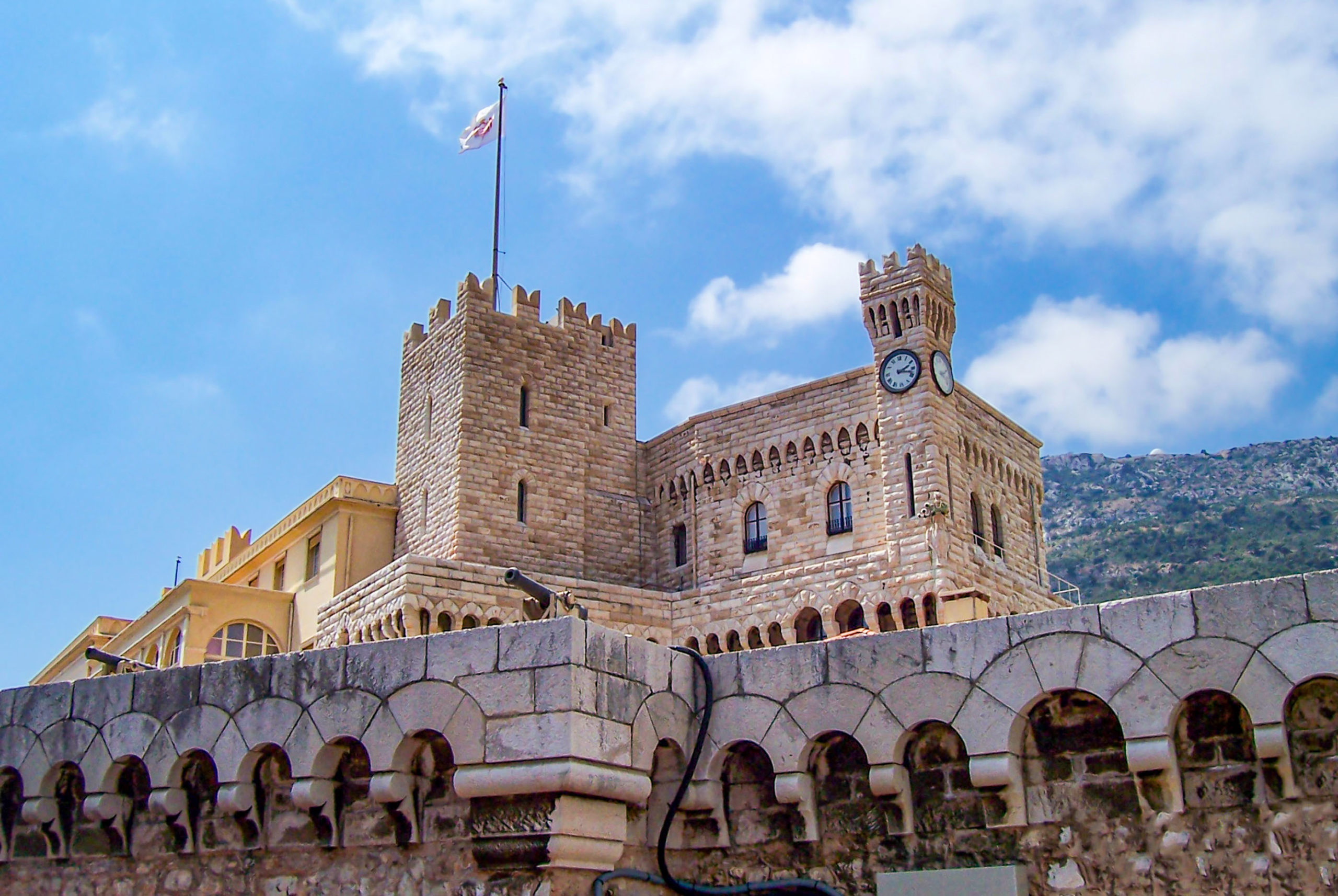
Map of the Prince’s Palace of Monaco
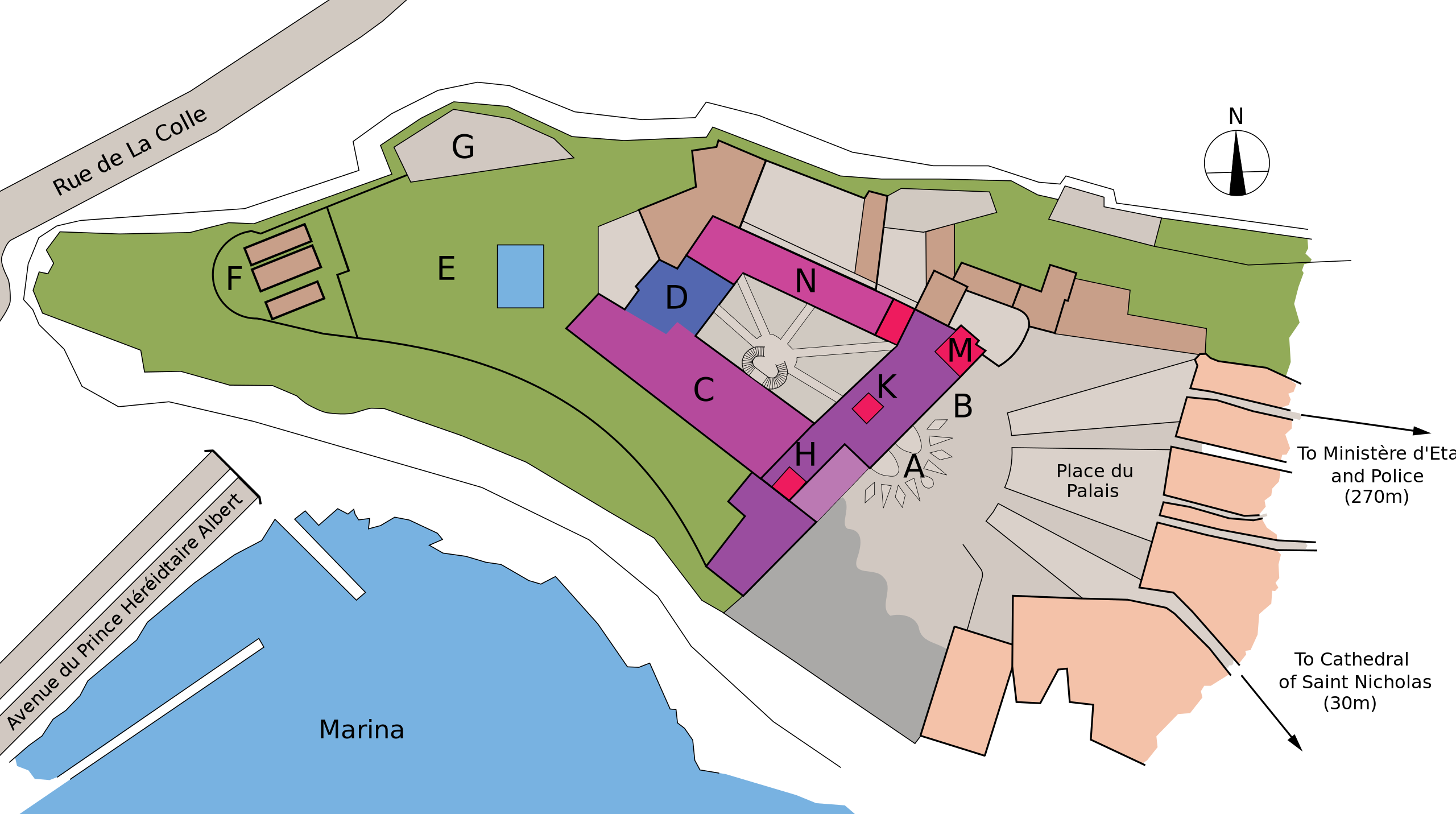
LEGEND:
- A: Entrance
- B: Loggias
- C: State flats
- D: Chapel
- E: Swimming pool
- F: Toussaint tower (tour Toussaint{)
- G: Serravalle
- H: Midi tower (tour du Midi)
- K: Middle tower (tour du Milieu)
- M: Sainte-Marie tower (tour Sainte-Marie)
- N: Administrative offices and servants’ quarters
The exterior of the palace
To admire the façade of the Prince’s Palace of Monaco, you have to stand in the centre of Place du Palais, the Principality’s most famous square.
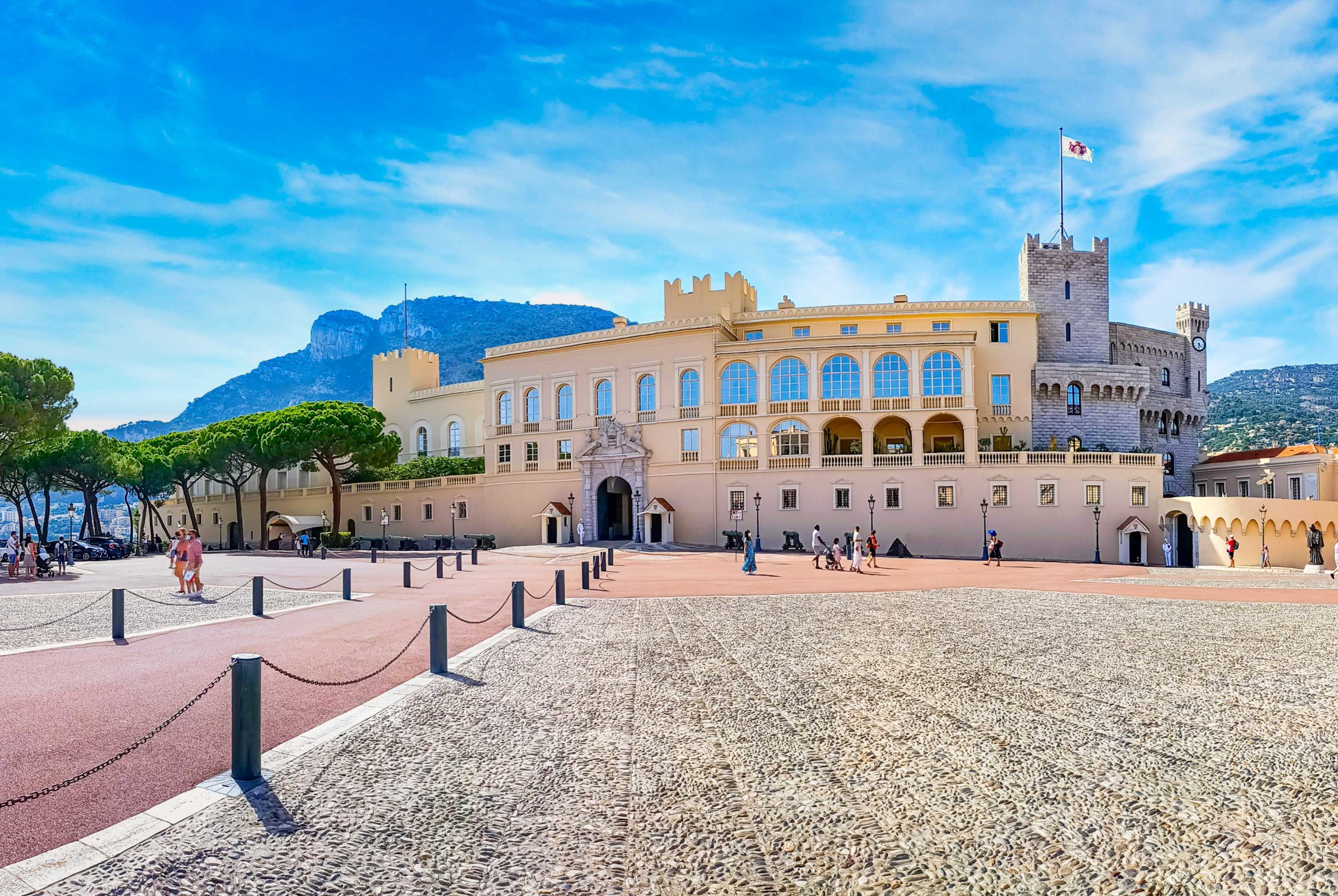
In Place du Palais, sentries and cannons guard the palace.
![Prince's Palace of Monaco © Joseolgon - licence [CC BY-SA 4.0] from Wikimedia Commons](https://frenchmoments.eu/wp-content/uploads/2014/08/Monaco-Palace-©-Joseolgon-licence-CC-BY-SA-4.0-from-Wikimedia-Commons-scaled.jpg)
Walk around the square to see more cannons facing the port of Fontvieille.
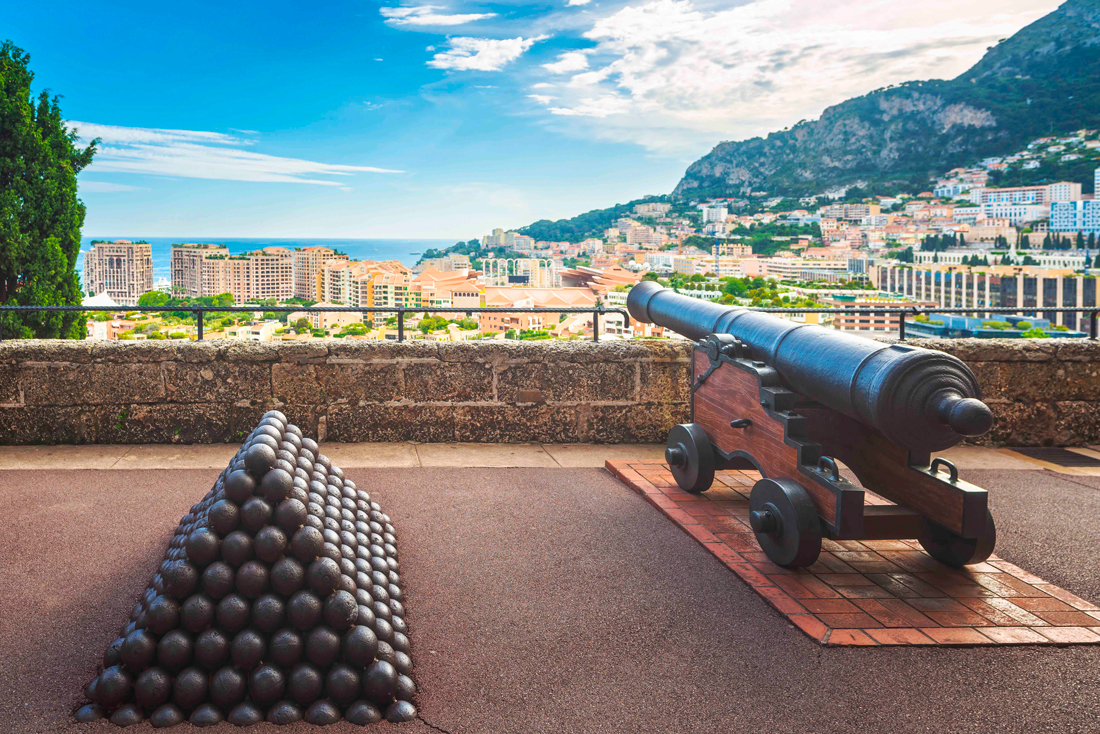
The changing of the guard
The changing of the guard (‘la relève de la garde‘) takes place every day at 11.55 am. The event is announced by a musical element (two drums and two trumpets). Apart from a few details, the parade dress remains that of the beginning of the 20th century (white uniforms in summer and black uniforms in winter).
![Rocher de Monaco - Changing of the Guards © Nikolai Karaneschev - licence [CC BY 3.0] from Wikimedia Commons](https://frenchmoments.eu/wp-content/uploads/2014/08/Monaco-Changing-of-the-Guards-©-Nikolai-Karaneschev-licence-CC-BY-3.0-from-Wikimedia-Commons.jpg)
The Prince’s Company of Carabinieri (Compagnie des Carabiniers du Prince) has 124 officers and men and is the military unit of the Monegasque public force.
![Monaco Guard © Kevin.B - licence [CC BY-SA 3.0] from Wikimedia Commons](https://frenchmoments.eu/wp-content/uploads/2014/08/Monaco-Guard-©-Kevin.B-licence-CC-BY-SA-3.0-from-Wikimedia-Commons-scaled.jpg)
Although the defence of the Principality of Monaco is placed under the protectorate of France, a unit for the protection of the Prince of Monaco ensures the safety of the Prince and the princely family.
The Prince’s Carabinieri Company was created on 8 December 1817 under the reign of Prince Honoré IV for the protection of the Principality of Monaco.
Its motto is “HONOUR – LOYALTY – DEVOTION” (Honneur, Fidélité, Dévouement).
Prince Albert II has held the rank of colonel in the Carabinieri Company since 11 November 1986.
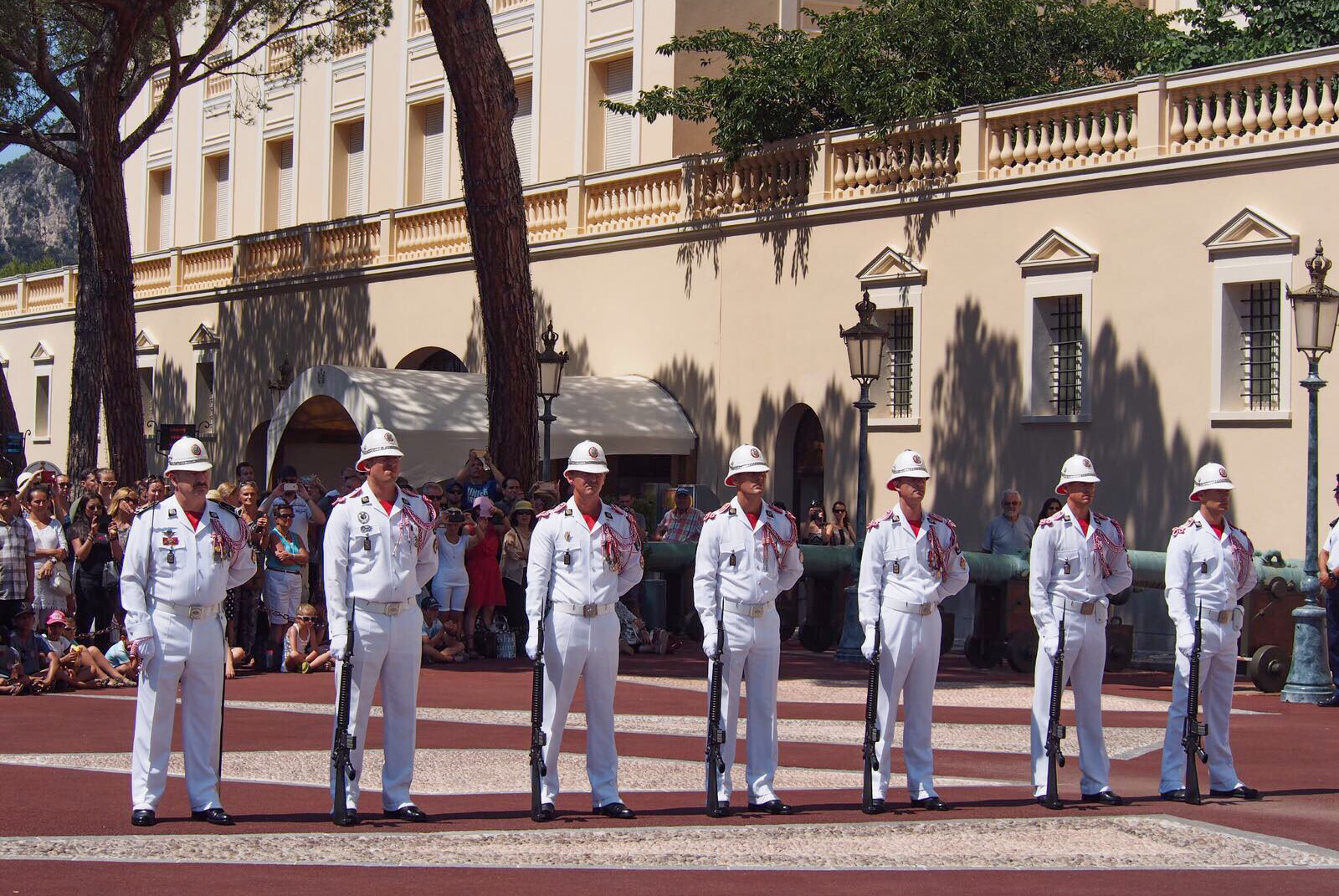
![Monaco Carabiniers © Nikolai Karaneschev - licence [CC BY 3.0] from Wikimedia Commons](https://frenchmoments.eu/wp-content/uploads/2014/08/Monaco-Carabiniers-©-Nikolai-Karaneschev-licence-CC-BY-3.0-from-Wikimedia-Commons-scaled.jpg)
![Prince's Palace of Monaco © Preslitsky - licence [CC BY-SA 4.0] from Wikimedia Commons](https://frenchmoments.eu/wp-content/uploads/2014/08/Monaco-Princes-Palace-©-Preslitsky-licence-CC-BY-SA-4.0-from-Wikimedia-Commons.jpg)
The architecture of the Prince’s Palace of Monaco
The external aspect of the palace is a blend of medieval fortifications and Renaissance features. Unlike other royal palaces (Versailles, Buckingham…), it lacks symmetry as it was initially built as a defensive castle to protect Monaco and its coastline from piracy.
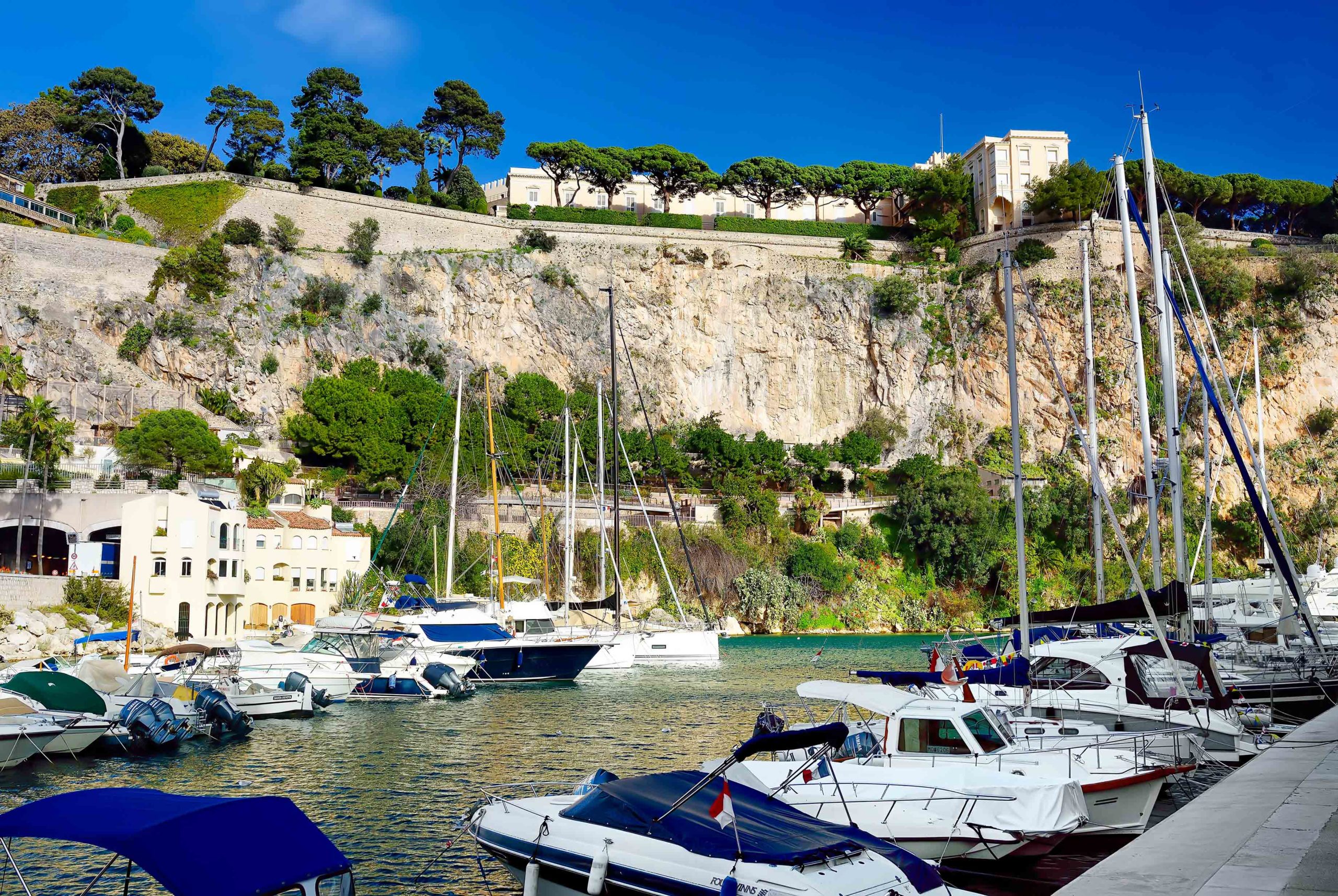
Although its façade has a defensive appearance, the crenellated square towers rising behind the classical façade were actually rebuilt during the 19th century.
The Baroque entrance to the palace was added by Prince Louis I. Executed by Antoine Grigho, it features a large arch surmounted by a broken pediment containing the coat of arms of the Grimaldis.
![Monaco Coat of Arms, Prince's Palace of Monaco © avu-edm - licence [CC BY 3.0] from Wikimedia Commons](https://frenchmoments.eu/wp-content/uploads/2014/08/Monaco-Coat-of-Arms-©-avu-edm-licence-CC-BY-3.0-from-Wikimedia-Commons-scaled.jpg)
Interior of the Prince’s Palace of Monaco
In the inner courtyard (cour d’honneur), a horseshoe-shaped staircase inspired by the one in Fontainebleau leads to the main entrance of the palace and the open Gallery of Hercules.
![Prince's Palace of Monaco Inner Courtyard © Zinneke - licence [CC BY-SA 3.0] from Wikimedia Commons](https://frenchmoments.eu/wp-content/uploads/2014/08/Monaco-Inner-Courtyard-©-Zinneke-licence-CC-BY-SA-3.0-from-Wikimedia-Commons.jpg)
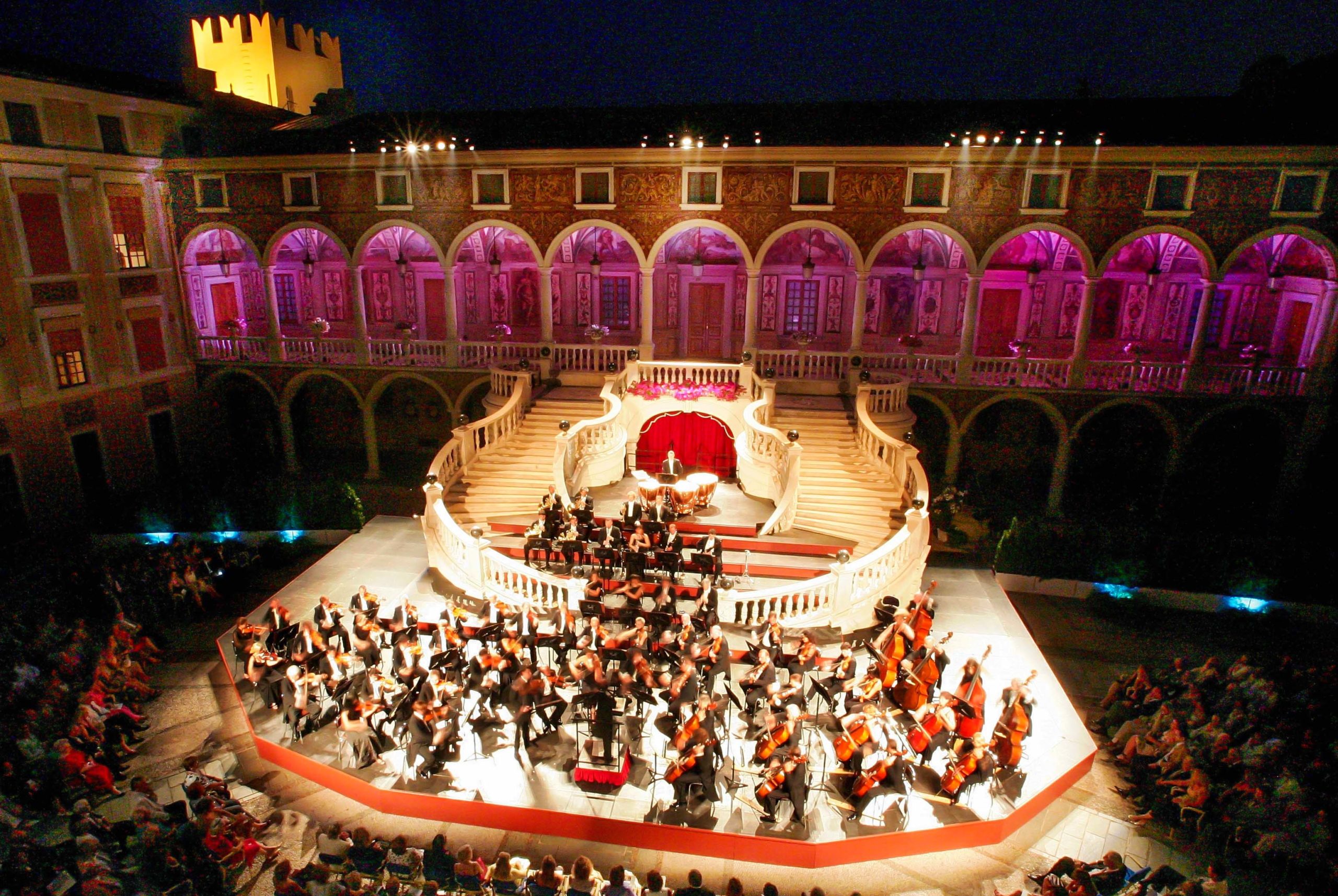
Then on the way to the throne room, visitors walk along an enfilade of rooms and galleries: the long Mirror Gallery, which was inspired by the Hall of Mirrors in Versailles, is followed by the Officer’s Room and then by the Blue Room, a large drawing room decorated with blue brocade.
The ultimate room at the end of the ceremonial route is the Throne Room, with ceiling frescoes painted by Orazio de Ferrari depicting the surrender of Alexander the Great. The throne was made in the Empire style and is placed beneath a red silk canopy topped with a gilt crown. The throne room has hosted state ceremonies since the 16th century.
The state apartments feature lavish furnishings and expensive works of art, marble floors and stairways, Renaissance ceiling frescoes, and panelled walls.
For more information about visiting the state apartments and the throne room, check out the official website of the Prince’s Palace of Monaco.
More practical info about Monaco
Pin in on Pinterest
Did you enjoy the reading of the Prince’s Palace of Monaco? If so, please pin these images on Pinterest, or share this article on Facebook and Twitter! 😊
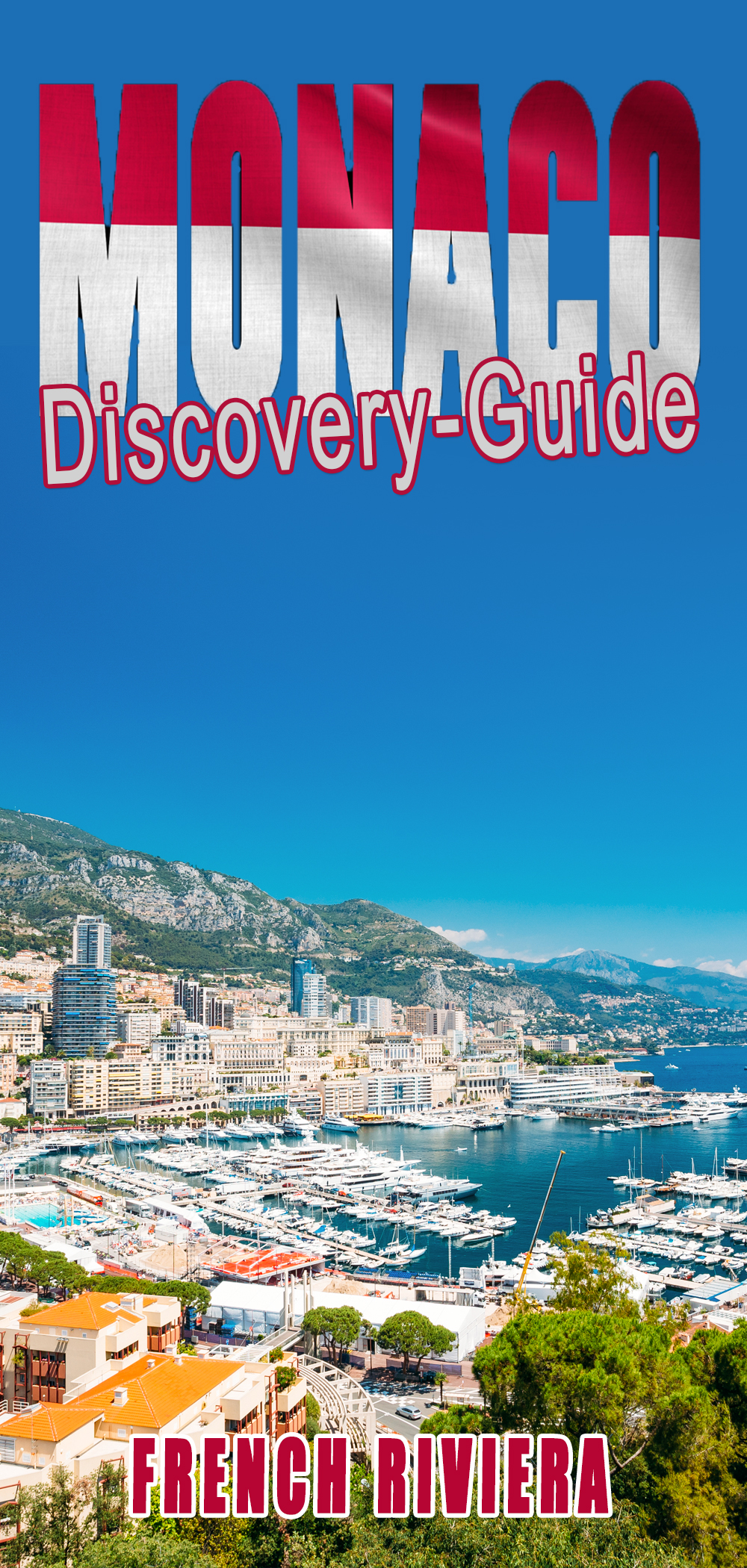
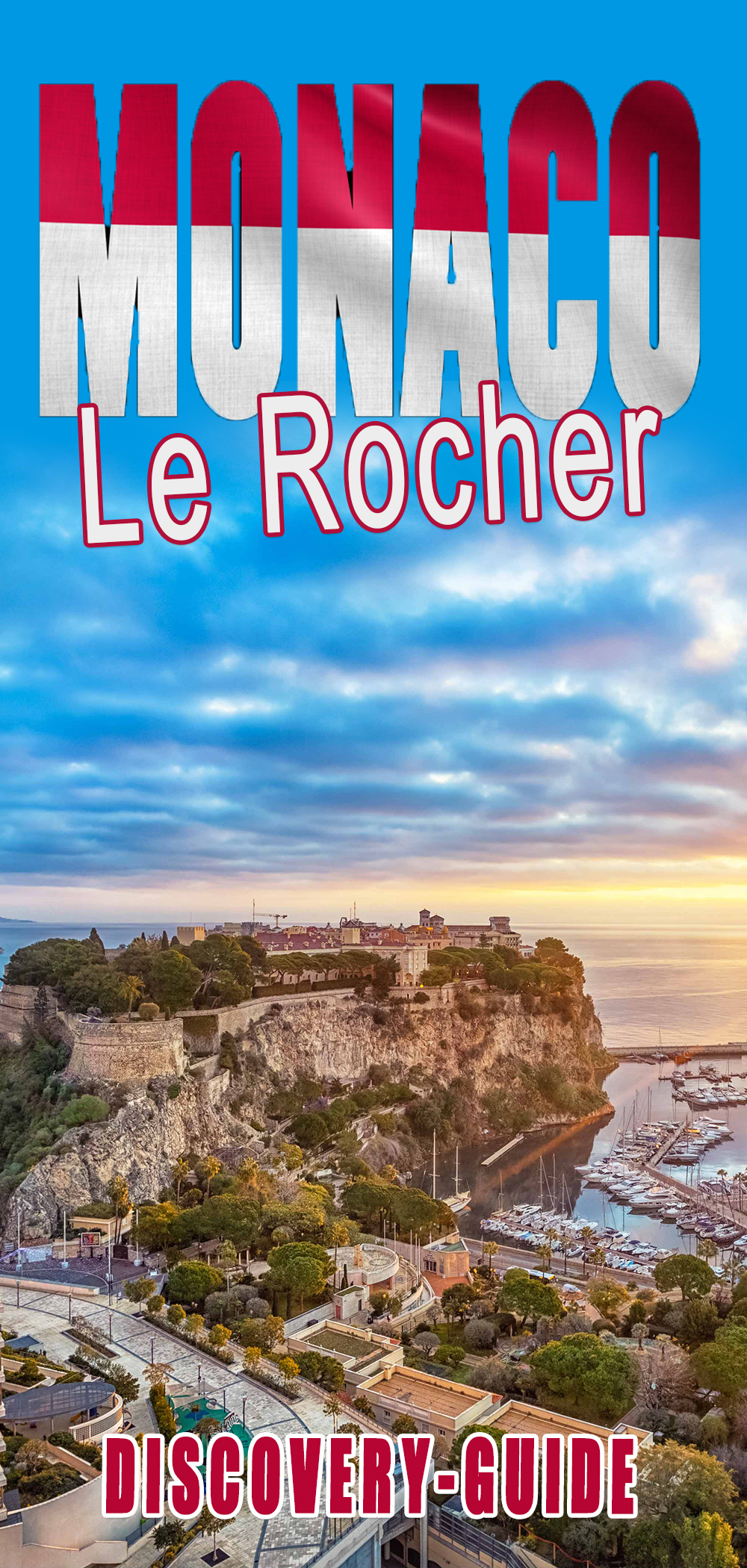
What to do in Monaco?
Want to know what you can do in and around Monaco? Click on the image below for a list of activities:
From Private Guided Walking Tour to Lamborghini Driving Experience and French Riviera Cruises, the Principality dazzles with glamorous activities you won’t forget. Here’s a little list of what’s on offer!
Where to stay in Monaco?
Did you know? There are 12 hotels in the Principality, four ***** and four ****. Unsurprisingly, accommodation in the Principality is very expensive. Unless you absolutely want to stay within the Principality, there is a cheaper alternative. For this, you should look at the Beausoleil district in France, a few minutes walk from the Monaco train station. Prices are much more affordable than in Monaco.
Click here to choose your accommodation in Monaco and its surroundings, or browse the map below:
How to get to the Principality of Monaco
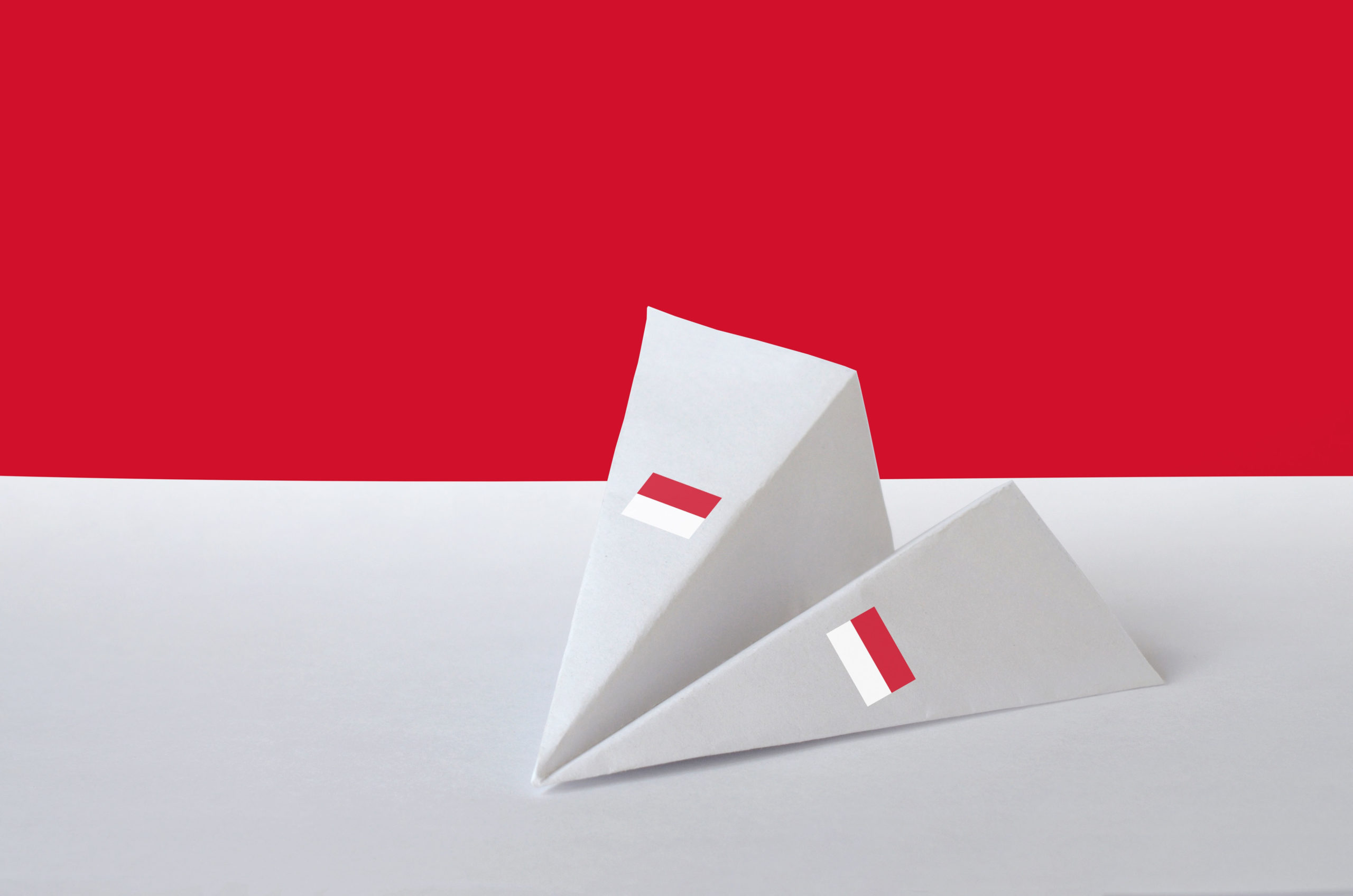
Arriving by car
Monaco is accessible from Nice via the scenic coastal Corniche roads:
- the Corniche Inférieure road follows the coast via Beaulieu,
- the Moyenne Corniche passes through Èze,
- and the Grande Corniche crosses La Turbie.
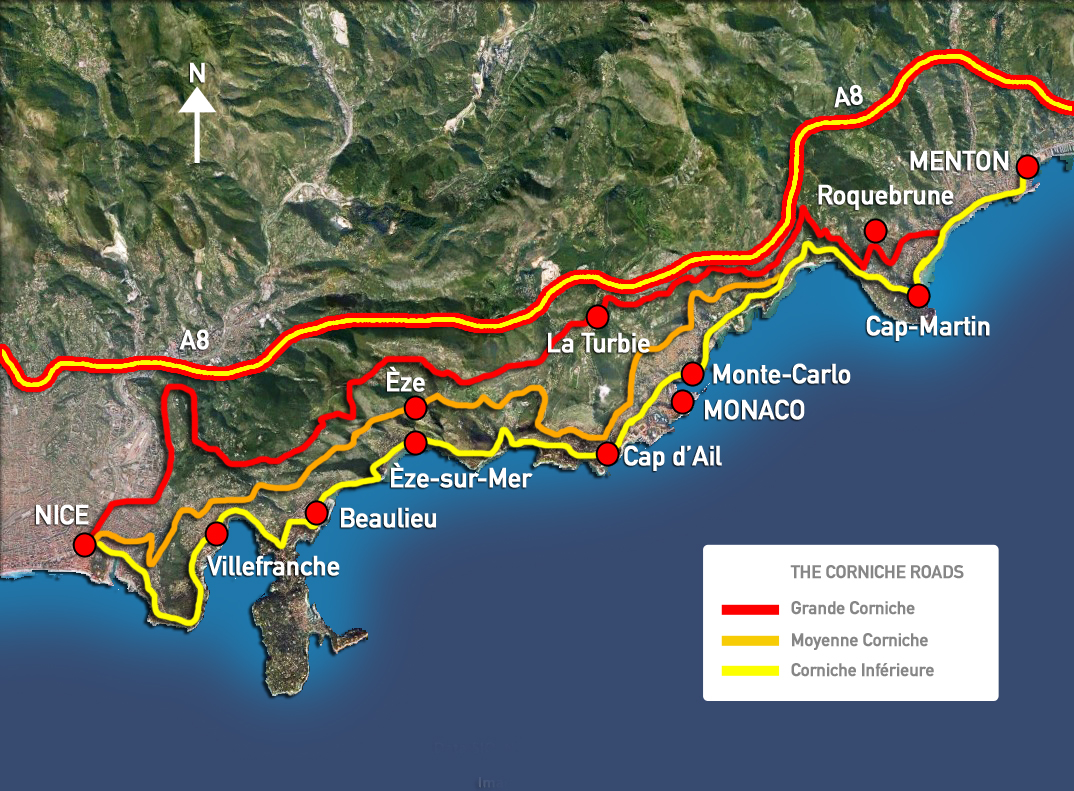
The Principality is bordered by the French A8 motorway linking Provence to Italy. Paris is 950 km away via the A6, A7 and A8 motorways.
Thanks to the A8 motorway, you can reach the centre of Monaco in less than 30 minutes from Nice and its airport.
- Exit 56 “Monaco” in the direction of France -> Italy
- Exit 58 “Roquebrune Cap Martin” in the direction of Italy -> France
However, please note that access to Monaco-Ville (Le Rocher) is limited to users whose vehicle is registered in Monaco and the French département of Alpes Maritimes [06].
How to park in Monaco
Other vehicles should park in the Parking des Pêcheurs, which has pedestrian access to the Rock in a few minutes.
It is advisable to leave your vehicle in one of the many public car parks. The Principality has no less than 40 car parks with 15,500 spaces.
All the car parks are underground, guarded and secure. They are therefore the best solution for parking your vehicle. All public “Monaco Parking” offers free parking for 1 hour. For more information, visit the official website of the Monaco Carparks.
Nearest Airport
Nice-Côte d’Azur International Airport links the Principality of Monaco to more than 86 destinations worldwide.
Through Nice Airport (25 minutes away by motorway), Monaco is linked daily to the main European capitals and, beyond, to all continents.
The airline Air France offers 73 flights a day to Nice Airport, directly from 15 cities in France and seven cities worldwide.
Moreover, the airport is 7 km away by helicopter to the Monaco heliport situated in the Fontvieille district.
Monaco Train Station
Monaco is located on the Marseille-Ventimiglia railway line. The underground SNCF station at Monaco-Monte-Carlo, offers daily TGV services to Paris, and up to ten other cities, via the nearby Nice-Ville station.
TER trains link Monaco to Menton and Ventimiglia to the north-east, Nice, Antibes, Cannes, Grasse and Saint-Raphaël to the south-west.
In addition, there are several daily connections to Turin, Milan and Rome via Ventimiglia.
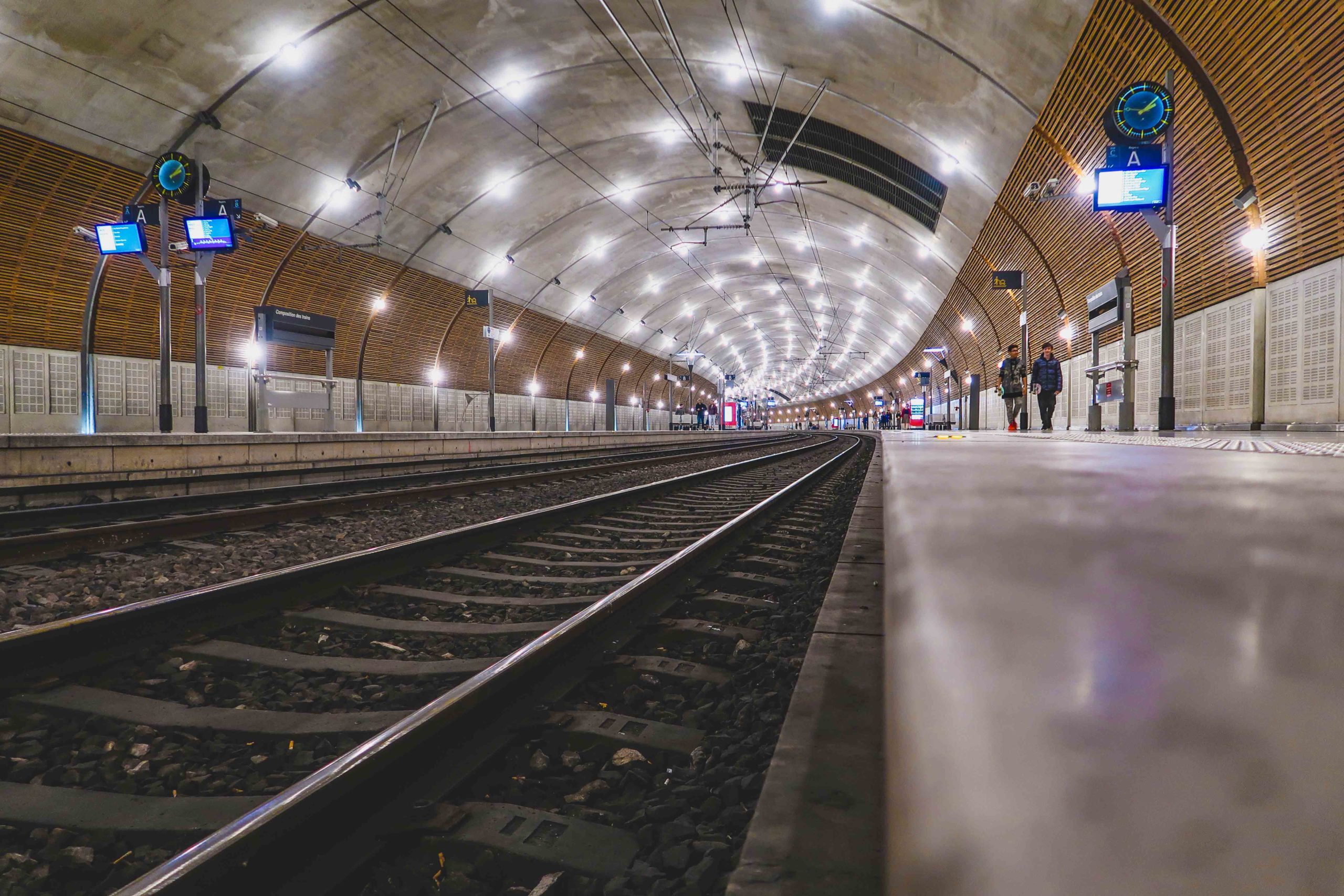
Six entrances allow users to access the underground railway station via a series of escalators or lifts:
Sainte Dévote Bridge, Parvis de la Gare (behind Sainte Dévote Church), Port Hercule, Jardin Exotique, Allée Lazare Sauvaigo/Rue Grimaldi/Rue Suffren-Reymond, Avenue Prince Pierre.
English-French Vocabulary
(f) for féminin, (m) for masculin, (adj) for adjective and (v) for verbs
- Alps = Alpes (f,p)
- castle = château (m)
- changing of the guard = relève de la garde (f)
- court of honour = cour d’honneur (f)
- French Riviera = Côte d’Azur (f)
- fortification = fortification (f)
- guard = garde (f)
- harbour = port (m)
- marina = port de plaisance (m)
- Maritime Alps = Alpes Maritimes (f,p)
- Mediterranean Sea = Mer Méditerranée (f)
- micro-state = micro-état (m)
- Mirror Gallery = Salle des Glaces (f)
- old town = vieille-ville (f)
- palace = palais (m)
- Prince = Prince (m)
- Principality = Principauté (f)
- port = port (m)
- rock = rocher (m)
- state apartments = appartements d’état (m,p)
- throne room = salle du trône (f)
![Prince's Palace of Monaco by night © Pierre Blaché - licence [CC0] from Wikimedia Commons](https://frenchmoments.eu/wp-content/uploads/2014/08/Monaco-Palais-Princier-by-night-©-Pierre-Blaché-licence-CC0-from-Wikimedia-Commons-scaled.jpg)
Featured image: The Prince’s Palace of Monaco. Photo: @SNABSA via Twenty20



